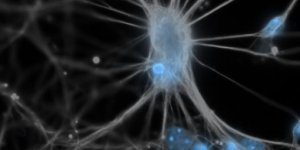| News / Science News |
Too much algae and too many microbes threaten coral reefs
NSF | APRIL 30, 2016
Corals and algae release nutrients that support a complex and efficient reef food chain. But when the system gets out of whack, the cycle breaks down and endangers the reef's health.

A healthy coral reef in the Line Islands in the central Pacific Ocean. ![]()
A new study explores how a process called microbialization destroys links in this delicate food chain. The scientists are from San Diego State University, University of Hawaii and from the Ocean University of Sri Lanka.
Overfishing the waters near coral reefs, however, removes the primary algae-eaters from the environment, allowing populations of fleshy algae to explode. In areas with large human populations, pollution often exacerbates the problem by stimulating these algae.
Fleshy algae on reefs release copious amounts of nutrients known as dissolved organic carbon, which microbes eat. The researchers theorized that when increased levels of algae produce meals for microbes, there are also higher levels of potentially harmful microbes throughout the reef ecosystem.
These microbes then endanger corals by depleting oxygen from the environment or by introducing diseases. As the corals die off, the algae have even more space to take over, leading to further coral mortality.
When reefs are dominated by fleshy algae, most of the energy in the ecosystem goes to the microbes. It doesn't support the variety of reef organisms that make up a healthy system.
The team collected more than 400 water samples from 60 coral reef sites across the Indian, Pacific and Atlantic Oceans. Back in the laboratory, they tested these samples for evidence of microbialization of algae-dominated reefs, looking for more microbes with more potential to harm reef organisms.
They analyzed the abundance of microbes throughout the samples and found that reef sites with more algae had more harmful pathogens, or disease-causing microbes.
YOU MAY ALSO LIKE




